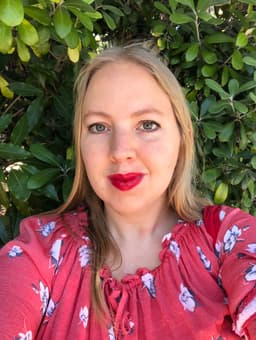Buy, sell, speculate: Designing an onchain business model


Technical R&D goes hand-in-hand with cultural renewal. The combination leads to creative destruction. Inevitably, novel business structures rise from the rubble.
“Crypto shines when it does both: make money for creators, and give their supporters a piece of the upside,” I wrote recently. The thing is, it’s very difficult to do both at once. Tantalizing potential is matched by vexing challenges.
Matthew Chaim is familiar with this balancing act. The musician-turned-builder has spent years blending art with commerce, most notably with the music NFT collective Songcamp.
Matthew’s latest project is Acid Test, an onchain radio show that lives as a mini app on Farcaster. Acid Test mixes music and interviews, and revenue from any given episode is distributed amongst all the contributors.
Intriguingly, the show is monetized through NFT sales and a memecoin, choosing both sides of crypto's great format war — and the business models that go with each option.
"I knew that I didn't want to do [zero] token because I want to build an onchain-native brand," Matthew told Splits in a recent conversation. The question wasn't whether to tokenize at all, but when to pull the trigger. And how to support two different revenue streams in a world of tenuous attention spans.
“I wanted Acid Test to have a token as part of its DNA,” Matthew said. “So I launched it at the start. But I didn't want that to be the headline of this thing.” Because the point of Acid Test is the actual show, not merely gambling on its potential success.
NFTs or content coins?
Selling NFTs is a straightforward source of revenue. Speculation is kept at arm’s length, one step removed, on the secondary market. By contrast, coins are all primary market. You could say the market itself is primary, superseding whatever art or message may be attached to the coin.
And the math is simple:
- Sell 100 NFT editions at 0.001 ETH each, and you've made ~$26.
- To generate the same revenue from memecoin swap fees, you need radically more volume.
- For example, Zora offers an on-platform swap reward of 0.495%.
- To earn 0.01 ETH (~$26) requires 2.02 ETH in volume, which is 200x more spending by the customers / end-users.
"If I just nix this whole collectibles model, there's so much revenue to the creator that's immediately lost out of the gate," Cooper Turley of Coop Records told Splits. Trying to support an ongoing creative practice with a coin is much trickier than the NFT game… if people want to buy your NFTs, that is.
Coins have an irresistible magnetic pull. The reality is, more people want to buy coins versus NFTs. The seamless tradeability of an ERC-20 taps into the primal force driving any market: greed. "Maybe this one could moon" isn't solely degen cope; it's a powerful incentive mechanism that slow-moving NFTs struggle to match.
At its best, a memecoin (or any coin) is an alignment technology, a minimum viable DAO that motivates holders to act for their mutual benefits.
Acid Test’s debut focused almost entirely on NFT sales, encouraging listeners to mint episodes of the show. But the immense latent power of a coin is why Matthew deployed $ACID. The memecoin hums along in the background, a liquid representation of the brand that participants can bet on and root for.
Choices on choices
A new onchain media business faces a maze of interconnected decisions, each with its own tradeoffs:
Free or paid? Acid Test episodes are free to stream but cost money to mint. The strategy: wide distribution, leveraging Farcaster as a platform, and monetization of the most enthusiastic fans. However, Matthew has considered gating content in the future. "Maybe people would pay to unlock extra songs," he pondered, channeling the iTunes era. Or perhaps premium features within the mini app, like custom playlists.
Subscription or à la carte? Hypersub is an onchain engine for steady recurring revenue, and the underlying Subscription Token Protocol could be integrated directly into the mini app. But Matthew hasn't pulled that trigger yet. Subscriptions create reliable income, but episode paywalls would limit reach. Free-to-listen paired with one-off purchases is a combination that maximizes accessibility, but episode revenue is unpredictable.
How to distribute rewards? The project’s vault of $ACID can be used to reward fans, but it’s tricky to offer financial incentives without diluting the genuine passion of the audience. Airdrops will juice engagement, but they attract farmers. Matthew is keeping it organic for now, watching the leaderboard fill with actual listeners rather than bots.
Each choice cascades into several others. Want subscriptions? Maybe tie them to token holdings… or vice versa, incentivize subscriptions with prorated airdrops. The design space is vast, and there's no proven playbook.
Tokens in a test tube
Onchain business models, for art and otherwise, are still being figured out. Everyone is running live experiments with real money and real audiences. The toolkit keeps expanding: NFTs, tokens, mini apps, embedded wallets, subscriptions, airdrops, etc.
Each project becomes a test case for different combinations. Projects like Acid Test are the laboratories where these combinations are conceived and refined, occasionally leading to a brand-new discovery. Matthew expects the show and its monetization to keep morphing as he tries new things.
Mini apps on Farcaster do offer a sweet spot: the distribution benefits of a social platform without the homogenization of a marketplace. You get to tap into network effects while steering your own ship. If you can code, or afford the development costs, this is the best of both worlds.
Acid Test is “kind of a real world game,” Matthew said, “in that you're listening to real people talk about real things, or real music that's released by great musicians. But the experience itself is game-like,” with an aesthetic world to explore and a leaderboard to ascend. Are you ready to play?